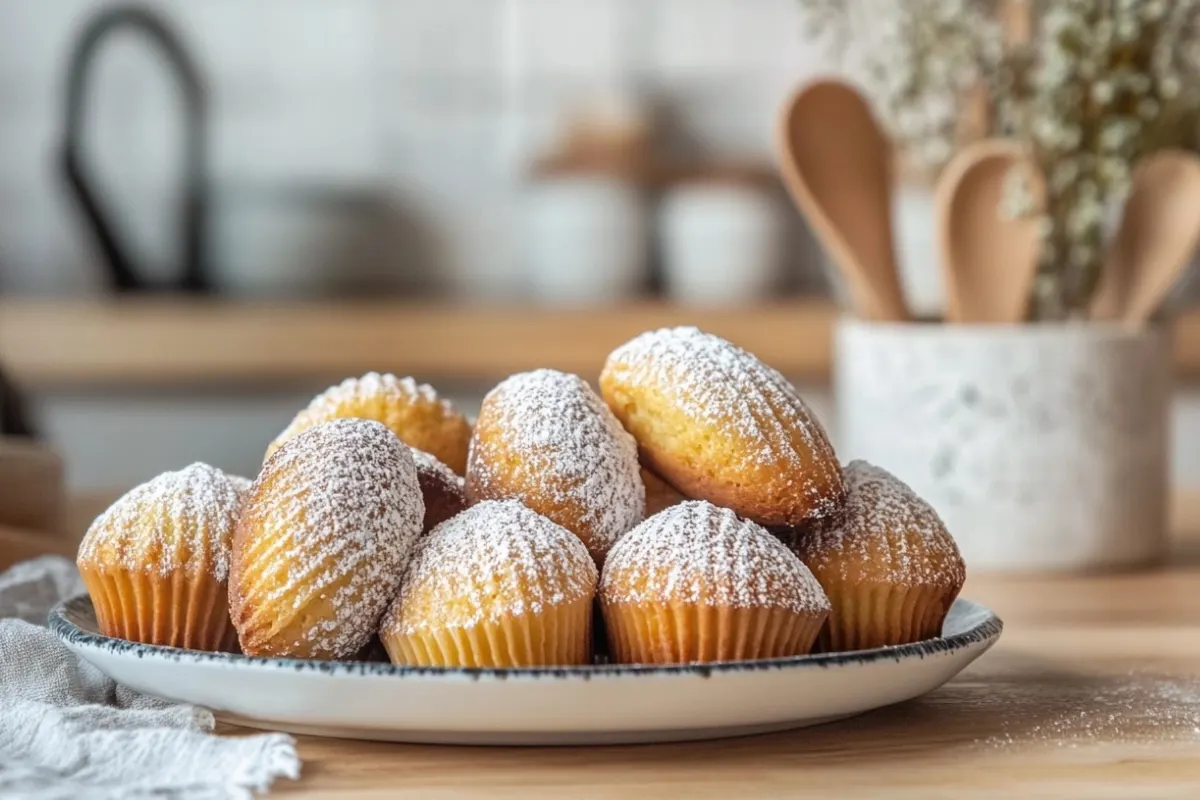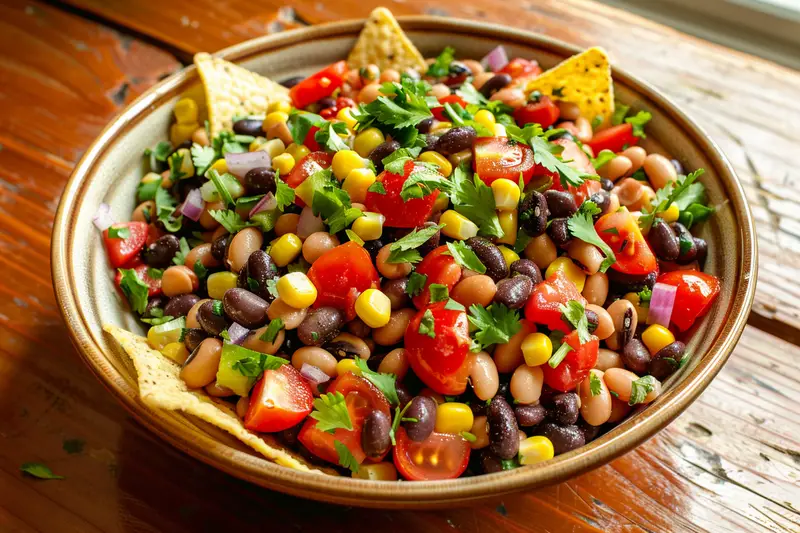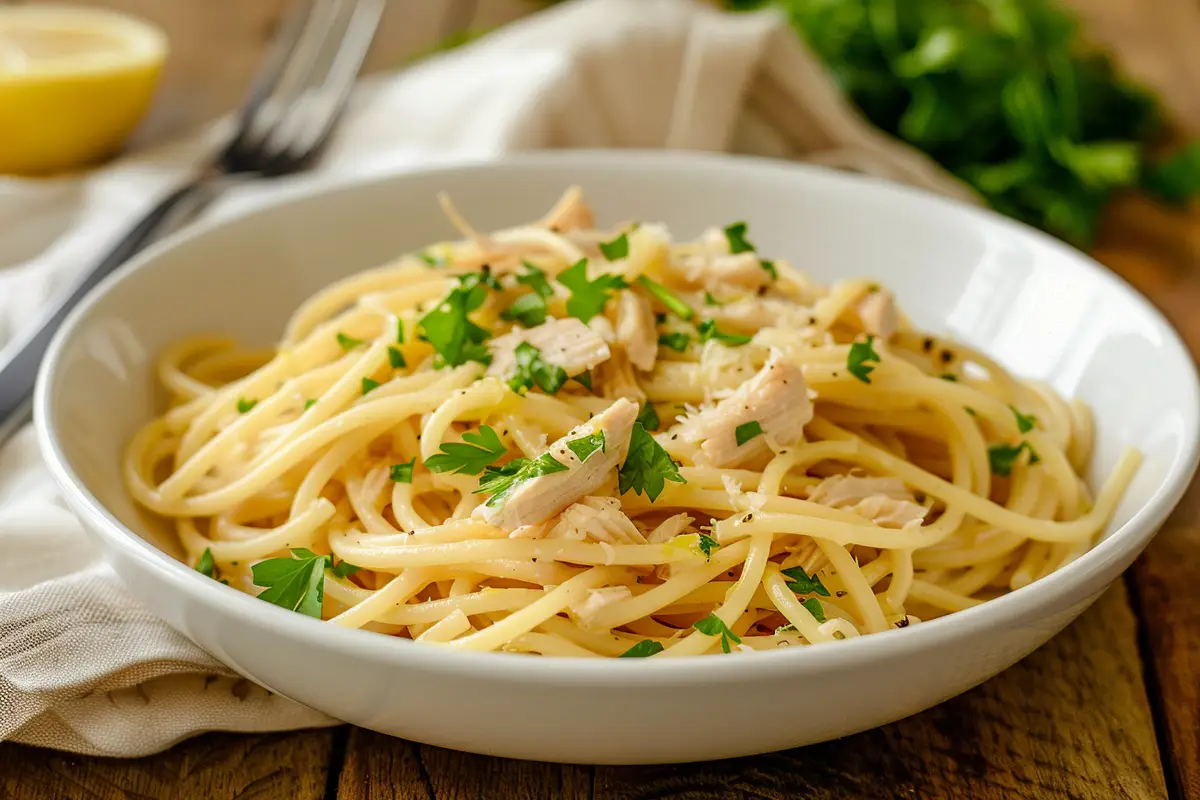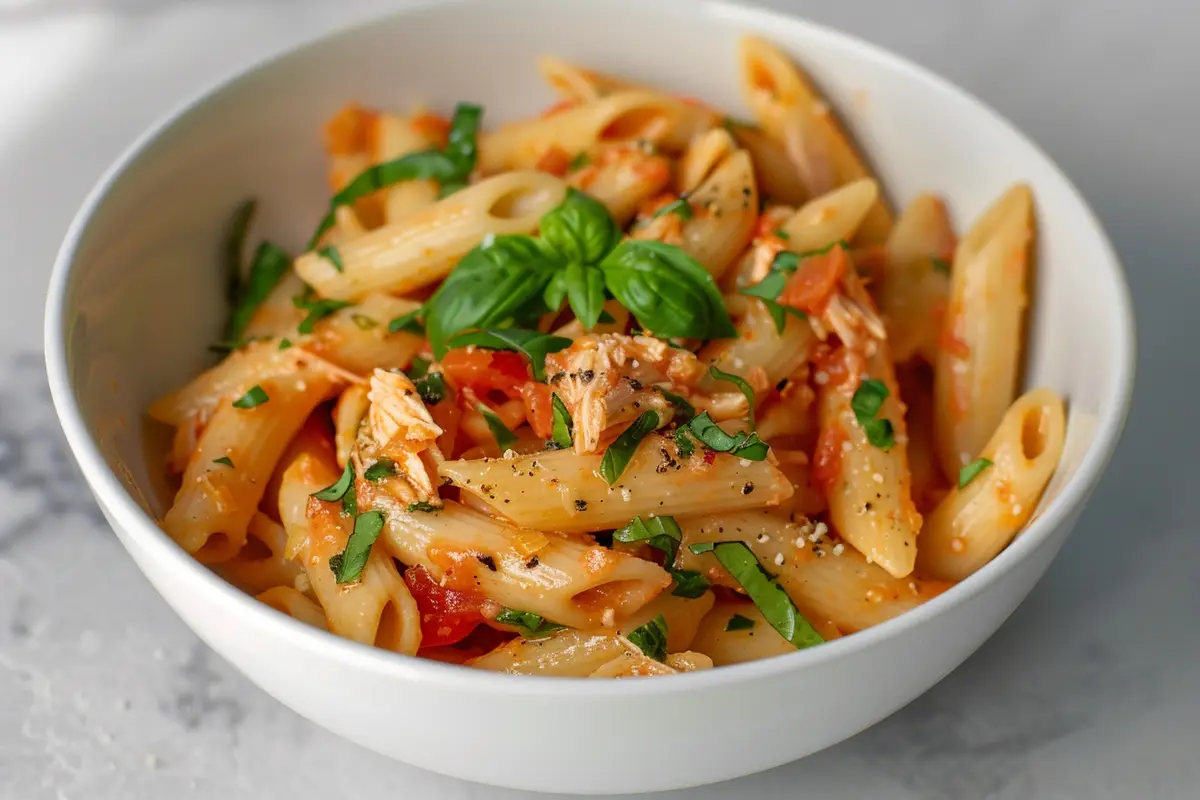Are you searching for a perfect substitute for Madeleine molds? This guide will help you bake these delicious treats without the traditional pans. Baking Madeleines is an experience of charm, tradition, and a delightful buttery aroma. However, the iconic shell-shaped molds that give Madeleines their signature look aren’t always available in every kitchen. Whether you’re baking for a special occasion or trying this classic French dessert for the first time, the lack of a Madeleine mold shouldn’t hold you back. Fortunately, plenty of practical alternatives deliver delicious results without compromising on flavor.
In this article, you’ll discover the best substitutes for Madeleine molds, detailed tips for adapting recipes, and creative hacks to bake perfect Madeleines no matter what tools you have on hand.
Table of Contents
Why Do Madeleines Require a Substitute for Madeleine Molds?
Traditional Madeleine molds are instantly recognizable for their elegant scalloped design. These molds create the dessert’s iconic shell shape and contribute to its unique texture. The raised grooves in the pan help the batter cook evenly, while the non-stick surface ensures a perfect release. Together, these elements produce the crisp edges and fluffy center that define Madeleines.
The shell shape of Madeleines is iconic, but their charm extends beyond their appearance. Learn more about what makes Madeleines so special in Why Are Madeleine Cookies So Good? for additional insights into their texture, flavor, and history.
The Importance of Heat Distribution
Madeleine molds, usually made of metal or silicone, are designed to distribute heat evenly across the batter. This uniformity is essential for achieving the dessert’s hallmark hump—a result of precise baking dynamics. Without the proper mold, achieving this balance might seem tricky, but it is far from impossible.
Historical Significance of the Shell Shape
The shell shape of Madeleines dates back to 18th-century France. According to legend, a young servant named Madeleine baked these treats in actual scallop shells, giving them their distinctive form. Although modern molds replicate this shape, the real magic of a Madeleine lies in its light, buttery texture and delicate flavor.
Explore Why Madeleine Cookies Are Good to understand the key elements that make these treats a favorite worldwide.
Common Substitute for Madeleine Molds Options
If you don’t have a Madeleine mold, rest assured that numerous substitutes can help you recreate this delightful dessert. Here are some of the most popular alternatives and how to use them effectively. When considering alternative molds, silicone molds are a popular choice. For practical tips on working with silicone, visit How to Keep Madeleines Moist?
1. Muffin Tins
Muffin tins are a practical and widely available alternative. Their small, rounded cavities closely mimic the size and volume of a traditional Madeleine mold, making them one of the easiest substitutes.
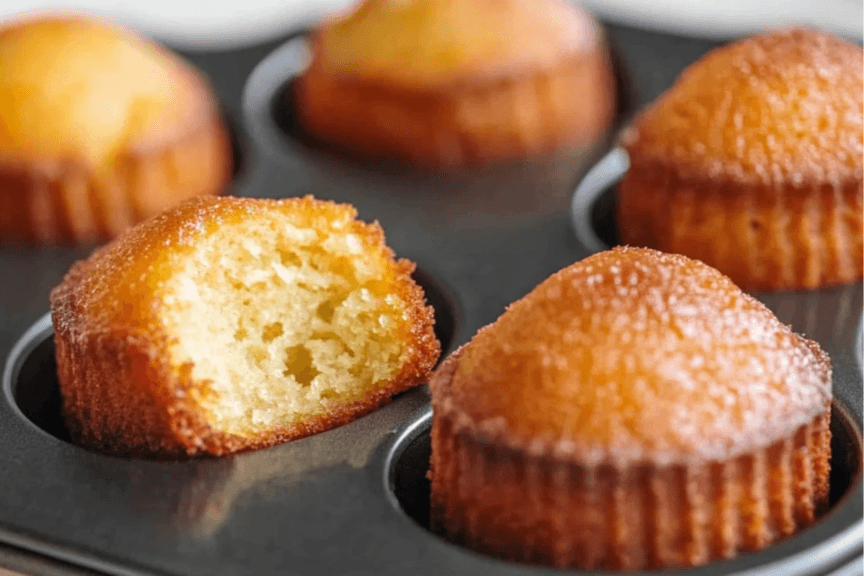
- How to Use: Grease the muffin tin thoroughly with butter or non-stick spray. Dust it lightly with flour to prevent sticking and create a golden crust.
- Pro Tip: Fill each cavity only halfway to mimic the depth of a Madeleine mold. This ensures even baking and prevents overflow.
2. Mini Loaf Pans
Mini loaf pans are ideal for creating rectangular Madeleines. Although they differ from the traditional shape, they offer a unique and sophisticated presentation.
- How to Use: Reduce the baking temperature by 10°F to prevent the edges from over-browning. Adjust the baking time as needed based on the larger mold size.
- Pro Tip: Add a touch of creativity by decorating these rectangular Madeleines with icing or powdered sugar.
Image Placeholder: [A batch of rectangular Madeleines baked in mini loaf pans, garnished with a light dusting of powdered sugar.]
3. Silicone Molds
Silicone molds are incredibly versatile and come in various shapes and designs. Their non-stick nature ensures effortless release, making them perfect for delicate batters like Madeleines.
- How to Use: Place the silicone mold on a baking tray for stability. Pour the batter evenly into each cavity and bake as directed.
- Pro Tip: Silicone molds may require a slightly longer baking time due to their slower heat conduction. Keep an eye on the oven to avoid overcooking.
Learn How to Keep Madeleines Moist and Delicious with expert tips and techniques.
Do Madeleines Always Need to Be Shell-Shaped? Exploring Substitute for Madeleine Molds
While the shell shape is iconic, it’s not the defining feature of a Madeleine. The dessert’s true appeal lies in its texture, flavor, and lightness. Many bakers are now embracing alternative shapes, especially when traditional molds aren’t available.For inspiration, explore Madeline Cookies Recipe Using Cream: A Complete Guide to Perfect Cookies for unique baking ideas.
Breaking Tradition with Creativity
Modern baking encourages experimentation. Whether round, square, or rectangular, Madeleines can take on a variety of shapes without losing their charm. In fact, unconventional shapes often spark curiosity and delight among guests.
Focus on Texture and Flavor
The soft crumb, buttery richness, and slight crispiness at the edges are what truly matter. As long as you maintain these qualities, the shape becomes secondary.
How to Adapt Your Recipe Using a Substitute for Madeleine Molds
When using a substitute mold, minor adjustments to your recipe can help ensure consistent results. Here’s how to make the most of your chosen alternative. To experiment with your recipe and try creative alternatives, check out Brownie Bites: Sugar-Free Options for creative dessert tips.
1. Adjust Baking Times
Different molds vary in depth and size, which impacts how long your Madeleines need to bake. Muffin tins, for example, may cook faster than larger loaf pans.
- Pro Tip: Start checking for doneness 2-3 minutes before the suggested baking time. Look for a golden crust and a slight springiness when touched.
2. Rest the Batter
Resting the batter is crucial for achieving the classic hump. Refrigerating the batter for at least one hour allows the gluten to relax, resulting in a better rise during baking.
- Pro Tip: Use a piping bag to fill the molds evenly after resting the batter. This reduces mess and ensures consistent results.
Creative Hacks: Baking Madeleines Without Any Mold or Using a Substitute for Madeleine Molds
For those who enjoy a bit of DIY, there are several ways to bake Madeleines without any specialized molds.
Baking without a mold allows for creativity. Learn how to work with colorful and fun options in The Most Colorful Cookie Recipe: How to Bake Rainbow Treats with Vibrant Ingredients.
DIY Parchment Molds as a Substitute for Madeleine Molds
Parchment paper can be folded into small cups or ovals to hold the batter. This method is time-consuming but allows for custom shapes.
Freehand Shaping for Madeleine Mold Substitutes
Spoon the batter directly onto a lined baking sheet to create rustic oval mounds. Although freeform, these Madeleines retain their signature flavor and texture.
Using Foil
Mold aluminum foil into small cup-like shapes and place them on a baking tray. This budget-friendly option works well in a pinch and is surprisingly effective.
Stay tuned for the second half of this article, where we’ll explore troubleshooting tips, FAQs, and more creative ideas to help you perfect your Madeleine-making skills.
How to Make Madeleines Step-by-Step with or Without a Substitute for Madeleine Molds
Creating Madeleines without the classic shell-shaped mold may sound challenging, but with the right approach, the results can be equally delicious and visually appealing. In this section, we continue exploring techniques to adapt recipes to alternative molds while ensuring perfect results every time.
1. Adapting the Baking Process
The baking process often requires adjustments when using non-traditional molds. The material, shape, and depth of your chosen substitute can all influence the baking dynamics.
Adjusting Temperatures and Times
Since alternative molds vary in size and material, they can heat up differently compared to classic Madeleine molds. Silicone molds, for instance, tend to bake more slowly due to their insulating properties.
- Pro Tip: Lower the baking temperature by 10-15°F when using metal or silicone molds. This helps prevent over-browning while ensuring even cooking.
- Check Regularly: Begin checking for doneness 3-4 minutes before the recommended baking time. A toothpick inserted in the center should come out clean.
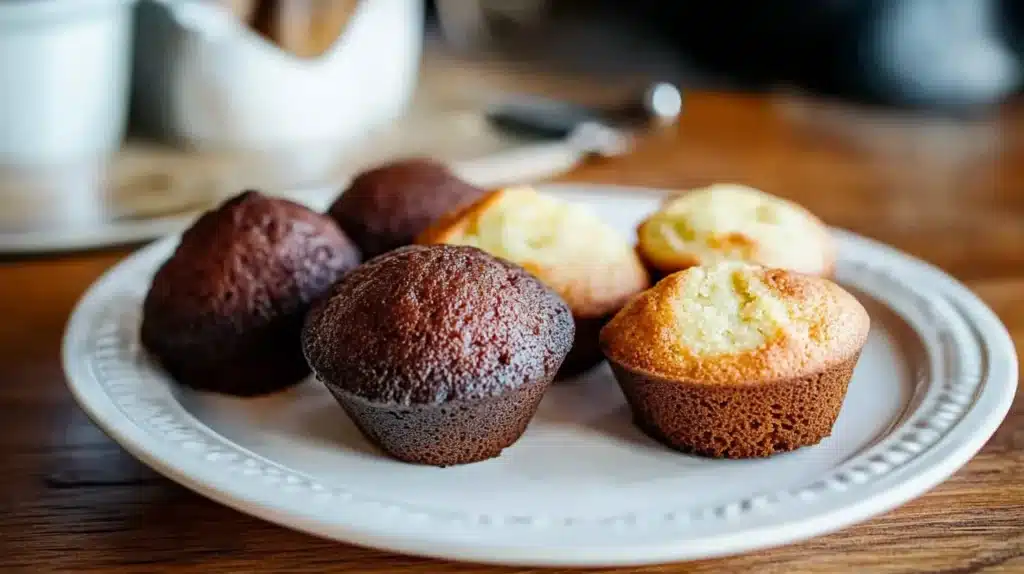
Using Parchment for DIY Molds
For a creative twist, parchment paper can be shaped into small cups or folded to mimic the structure of traditional molds.
- How to Use: Cut parchment into squares, fold them into cup shapes, and place them in a muffin tin for stability. Fill each with batter and bake as usual.
- Why It Works: Parchment’s non-stick surface ensures easy release and adds a rustic aesthetic to your Madeleines.
2. Cooling and Presentation
Cooling is an essential step that ensures the Madeleines retain their texture and appearance. Overhandling while they’re hot can cause them to lose shape or break apart.
Cooling Techniques
After baking, allow the Madeleines to rest in their molds for 5 minutes. This brief period lets them firm up slightly, making them easier to release.
- Pro Tip: Use a small offset spatula or butter knife to gently loosen the edges before turning the molds upside down to release the cakes.
- Serving Idea: Arrange the cooled Madeleines on a wire rack and dust them with powdered sugar for a classic touch.
Pro Tips & Variations: Choosing the Best Substitute for Madeleine Molds
Baking Madeleines is an opportunity to get creative. From flavor additions to unique presentations, the possibilities are endless.
Flavor Enhancements
- Zest and Extracts: Add orange zest or almond extract to the batter for a burst of flavor. These ingredients pair beautifully with the buttery richness of Madeleines.
- Chocolate Dips: Dip the tips of your Madeleines in melted dark or white chocolate. Sprinkle with crushed nuts or coconut for added texture.
Presentation Ideas
Serving Madeleines in unique ways can elevate their appeal. For a festive occasion, stack them in a pyramid shape on a decorative platter and garnish with edible flowers.
- Pro Tip: Serve alongside tea or coffee to highlight their delicate flavor profile.
If you’re exploring new techniques, consider checking out How to Best Use a Rotisserie Chicken? Creative Recipes & Tips for insights on combining flavors and techniques.
FAQs: Answering All Your Questions About a Substitute for Madeleine Molds
What Can I Use if I Don’t Have a Madeleine Mold?
You can use muffin tins, mini loaf pans, or even DIY parchment molds as substitutes. Each option offers a unique shape while preserving the classic texture and flavor.
What Are Madeleines Similar To?
Madeleines are similar to sponge cakes or butter cakes but are much lighter and airier. Their crisp edges and soft interiors make them distinct.
Do You Have to Use a Madeleine Pan?
No, a Madeleine pan is not a requirement. While it provides the traditional shell shape, alternative molds can produce equally delicious results with minor recipe adjustments.
Do Madeleines Have to Be Shell-Shaped?
Not necessarily. While the shell shape is iconic, the essence of a Madeleine lies in its flavor and texture. Creative shapes can add a modern twist to this classic dessert.
Conclusion: Baking Madeleines with a Perfect Substitute for Madeleine Molds
Baking Madeleines without a traditional mold may require a bit of improvisation, but the results are well worth it. Whether you use muffin tins, silicone molds, or creative DIY options, you can enjoy this iconic dessert’s soft, buttery texture and rich flavor. By adapting your techniques and experimenting with shapes, you’ll discover new ways to make Madeleines your own.
Want to see more? If you enjoyed this article, we invite you to join us on our Facebook page ElyseRecipes. That way, you’ll be among the first to hear about our updates, cooking tips, and recipe ideas! Come share your passion and connect with our community.

